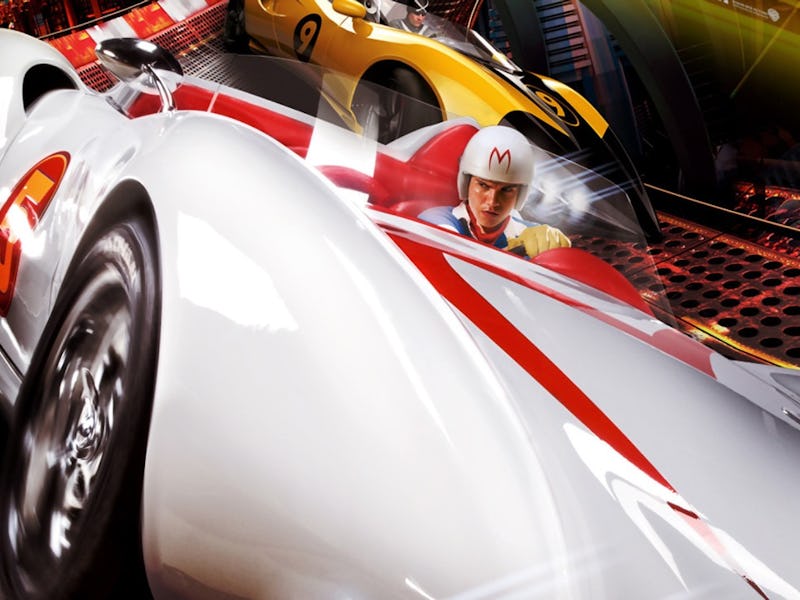15 Years Later, Speed Racer Remains One of the Most Fascinating Flops Ever
The Wachowskis were driving angry.

In 2008, the Wachowskis released what’s seen as their first major failure. Speed Racer was their follow-up to the Matrix trilogy, which was enormously profitable even if the sequels weren’t nearly as beloved as the first installment. But Speed Racer was a commercial and critical flop, grossing under $100 million against a budget of $120 million.
In the years since, some corners of the internet have begun to reclaim Speed Racer as a pop art masterpiece. Its cartoonish visual aesthetic turned many contemporary viewers off, but it’s now a reminder of all the color that’s been sapped out of modern movies. What’s most striking, though, is that Speed Racer seemed to anticipate the world of IP-driven blockbusters that we’re living through long before superhero movies reached their peak.
Released just a week after Iron Man, Speed Racer is about the difficulty of trying to do something pure in a world ruled by men looking to make a quick buck. The film follows Speed as he fights to succeed in the world of racing after the loss of his brother. After discovering that many of the high-profile races he’s competing in are fixed by corporate interests, Speed becomes determined to forge his own path and become the best in the sport without giving in to corruption.
Speed is essentially a stand-in for the Wachowskis, two filmmakers who want to do weird, expansive stuff, but who need someone to give them the money for it. They stand in sharp opposition to the hegemony of corporate filmmaking. Like Speed, they don’t have any overarching need to make money. The work is the point.
The plot is all about battling corruption and fighting for individuality, but so are the film’s aesthetic choices. Like so many of the Marvel movies that would come to dominate the box office, Speed Racer is based on a comic book. In adapting the material, though, the Wachowskis chose to retain both the earnest sentiment of the original story and the wacky visuals that comic book movies usually strip away. The CGI in Speed Racer doesn’t look realistic, but what the Wachowskis understand is that CGI doesn’t have to look realistic. A little goofiness makes a world far more memorable than photorealistic sterility.
Remember color in movies?
Part of the tragedy of Speed Racer is that the Wachowskis were right to make this their screed about corporate power. The movie’s poor box office was one of the last nails in the coffin for original blockbusters, and it came right as another age was dawning. Iron Man certainly felt fresh in 2008, and The Dark Knight would come just a few months later and offer us another preview of the future. Those movies are both entertaining, but they’re also part of the corporate machine Speed Racer warns against selling your soul to.
The movie’s ending, which suggests that it’s possible to create something truly great even without the help of corporate power, is a hopeful final note, if perhaps a bit of a naive one. Maybe there’s a future where the Wachowskis and people like them will get to make weird stuff on a huge scale. Until that day comes, though, we should be grateful we’ve at least got Speed Racer.